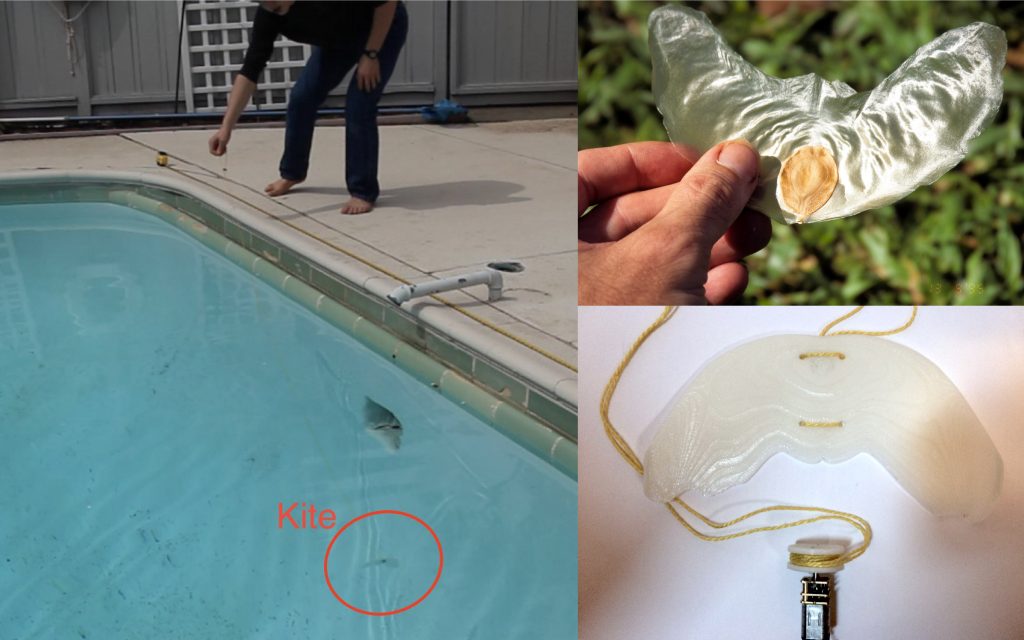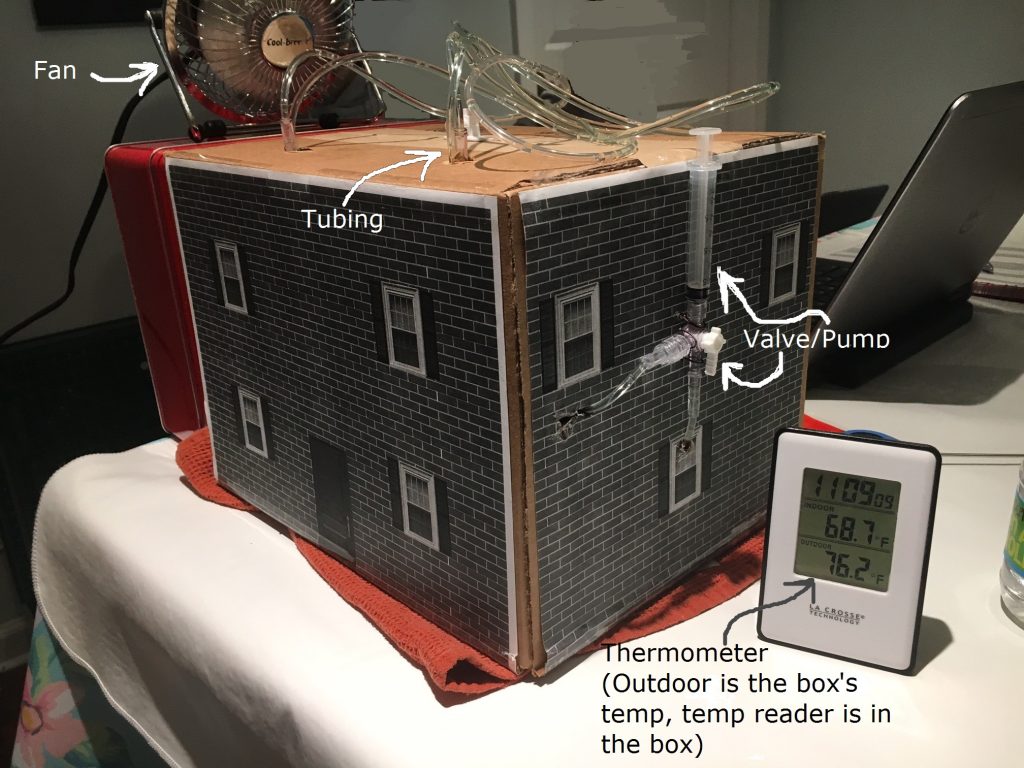By. Laura Arndt, Global GreenSTEM and Gretchen Hooker, Biomimicry Institute
“Educators and noneducators were astounded, intrigued, and immediately curious about the natural world. There is no doubt that nature is the consummate engineer, problem solver, and artist. Now I approach many problems with a WWND [What Would Nature Do?] mindset!”
This educator’s observation captures the response we hear learners of all ages express when they are introduced to biomimicry. And who wouldn’t be fascinated? Scientists have used shark skin as a model for a hospital surface coating that resists microbes, keeping the space germ-free without harsh chemicals. Extreme sport enthusiasts were inspired by the antics of flying (technically, gliding) squirrels to invent the wingsuit seen in the movie Transformers. Paper-thin solar panels the size of a hand have been designed after a leaf’s photosynthetic processes. Biomimicry examples like these bring science and engineering to life in ways that offer an engaging and empowering framework for purposeful GreenSTEM learning experiences.
What is Biomimicry?
Biomimicry is an innovation practice that seeks design solutions by looking to examples in the natural world. The term biomimicry was coined from the roots “bios,” meaning life, and “mimesis,” to copy or emulate. Therefore, “biomimicry” literally means to copy, or emulate, living things. (Note: This is distinct from the concept of ‘mimicry’ in evolutionary biology, which refers to an advantageous resemblance of two or more organisms that are not closely related taxonomically.)
Biomimicry begins with noticing what works in nature and uses those organisms and ecosystems as models for designing innovative ways to solve human design challenges. One of the most famous examples of modern biomimicry is Velcro®. It was invented when a Swiss engineer noticed how well burdock seeds stuck to his dog’s fur using tiny hooked barbs and thought the same strategy would make a good fastener. With over 3.8 million years of evolutionary research and development, nature’s living things have successfully adapted to diverse environments. These adaptive traits provide perceptive humans with countless design ideas for virtually any problem that arises.

While biomimicry may seem like a new approach to engineering design, innovators throughout history have been inspired by nature. Biomimicry is as old as Earth’s First People and continues to be a foundational part of their Ways of Knowing. Indigenous cultures have always lived in close relationship with nature, seeing it as their model for all innovation, art, and actions. In recent decades, a new biomimicry movement is awakening the rest of the world to reconnect with nature in ways many have long forgotten. Janine Benyus, natural sciences writer and co-founder of the Biomimicry Institute, is credited with popularizing the modern term “biomimicry” in her 1997 book Biomimicry: Innovation Inspired by Nature. In it she chronicled the work of bio-inspired researchers and argued powerfully for biomimicry as a pathway to a more sustainable future. Today, as more and more scientists and innovators discover the possibilities of biomimicry, a rapidly growing field of study and exciting new STEM careers have emerged. In 2017, Fortune magazine named biomimicry the first of “5 Trends to Ride,” stating that, “If you’re not incorporating the most brilliant ideas from the natural world into what you sell, you’re leaving money on the table.”
Why Teach Biomimicry?
Beyond practical application to the careers of the future, biomimicry provides a refreshing entry point into many of the core scientific subjects educators already need to teach. The compelling narratives and fascinating natural phenomena behind biomimetic innovations captivate students and teachers alike and lend new meaning and relevance to lessons in physical, earth, or life science. For example, in a lesson about the physics of superhydrophobicity, students explore the self-cleaning phenomenon exhibited in lotus leaves and how engineers have mimicked it in products such as paint and textiles. A lesson about wave interference and the properties of light could begin with an examination of how the wings of the blue morpho butterfly produce brilliant colors by reflecting light using nanoscale structures (not pigment), and new technologies that apply the same principle.
However, it’s when students become designers themselves that biomimicry-based education really comes to life. In the Biomimicry Institute’s Biomimicry Youth Design Challenge (YDC) students design nature-inspired solutions to local or regional problems that are connected to climate change. This real-world GreenSTEM context creates a classroom of highly engaged students with a sense of curiosity and empowerment that is tangible. Global and local environmental and sustainability problems no longer seem impossible to solve after viewing them through the biomimicry lens. Now the problems become achievable challenges with solutions hidden in plain sight for keen nature detectives. One student participant bluntly proclaimed her new perspective this way: “There are solutions in nature to many problems if you just bother to take a look.”
A team of sixth-graders shared this thought with their award-winning project, a reflective roofing tile to cool desert homes, inspired by the Saharan silver ant:
“Knowing you have done or made something that could save or help someone’s day is probably one of the best feelings in the world…It is a really great feeling to be working with your friends to create something that all of you are all really proud of. We also enjoyed learning about all of the special talents of animals around the world. From water storage to withstanding pressure, living things are truly the most amazing things on this earth.” – Team SunTile, sixth-grade students at Punahou School, Honolulu, Hawaii

Integrating biomimicry into curriculum as a design challenge allows the teacher to creatively bundle the Disciplinary Core Ideas (DCI) of the Next Generation Science Standards into a course-specific unit. At the most basic level, creating a biomimicry design requires student understanding of adaptation, structure and function, and engineering design. Whatever the curriculum focus – water or energy concepts – the corresponding DCIs can be addressed by customizing the unit around a related design problem. For example, in a unit on water quality, students could study how nature manages water and use what they learn to propose design solutions for regions where there is either too much, too little, or contaminated water.
One teacher summed up the integrative value of teaching with the YDC, saying:
“Access to [the Biomimicry Youth Design Challenge] has revitalized my ecology unit and made it so much more relevant, purposeful, and exciting for students. It has enabled the unit to become a PBL experience and has heightened student engagement. I feel that I am giving them more tools and a framework to address the problems their generation will need to solve.” (Feedback from a 2019 program survey)
Completing biomimicry design challenges also requires that students practice the four C’s— Communication, Collaboration, Critical thinking, and Creativity. Their collaborative teamwork and out-of-the-box thinking pushes innovation to new levels. Presenting their research alongside their design ideas hones skills in scientific and persuasive communication. And there’s a “fifth C” worth mentioning: Confidence. Following biomimicry design experiences, students see themselves as innovators, as changemakers, and as protectors of the natural world’s treasure trove of tried and true design ideas. These projects offer inspiration and hope for a sustainable future as students begin to see that they can help shape a more sustainable world.

How Do I Get Started Teaching Biomimicry?
Aspects of biomimicry can be introduced in a single lesson, as a theme woven within a course, or explored in-depth with a multi-week design project, like the YDC. Here are some ideas and resources to get you started:
- The publication Sharing Biomimicry with Young People, by the Biomimicry Institute, is a great primer for educators new to the topic and includes teaching suggestions and links to resources.
- Browse the Resources section on AskNature.org for media selections, lessons, and activities. All resources can be filtered by type and age appropriateness. Note: a free account is required to download materials.
- Take students outside into a natural space and light up their innate curiosity and affinity for nature. If you can’t go outside, bring nature indoors by collecting or borrowing a selection of natural artifacts (plant parts, feathers, bones, shells, fur, etc.). Have students ask open-ended questions about (and later research answers to) the adaptive benefits of the structures and behaviors they observe and speculate about what we might learn from them.
- Prompt students to make connections between the function of structures in biology and possible applications to human designs.
- Pose a question about a real-world problem related to the course concepts and have students search for design ideas in nature.
- Empower students to solve problems they care about by participating in the Biomimicry Youth Design Challenge.
Author Bios
Laura Arndt, executive director and relevant STEM creator at Global GreenSTEM, works with educators to create STEM curricula, programs, and instructional systems that are purposeful and relevant to the learners’ natural environment, culture, and daily life. She has collaboratively consulted with schools, districts, national and international organizations, and state and national agencies to develop Next Generation Science Standards-aligned experiences for learners to solve local environmental and sustainability problems by applying STEM knowledge and skills. Laura is currently working with the Biomimicry Institute to develop instructional resources and professional development for the Youth Design Challenge that emphasize project-based learning and local sustainability issues. Laura previously taught K-12 science and GreenSTEM for sixteen years.
Gretchen Hooker, program manager at the Biomimicry Institute, leads the development of the Biomimicry Youth Design Challenge as well as other projects that promote design and ecological literacy for learners of all ages. She is an industrial designer by training, certified Biomimicry Specialist, and Montana Master Naturalist.

